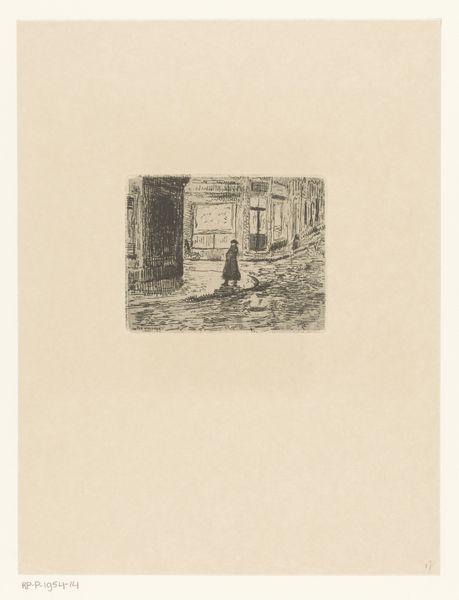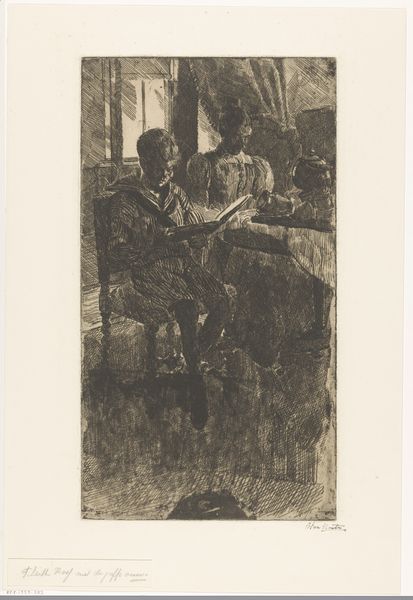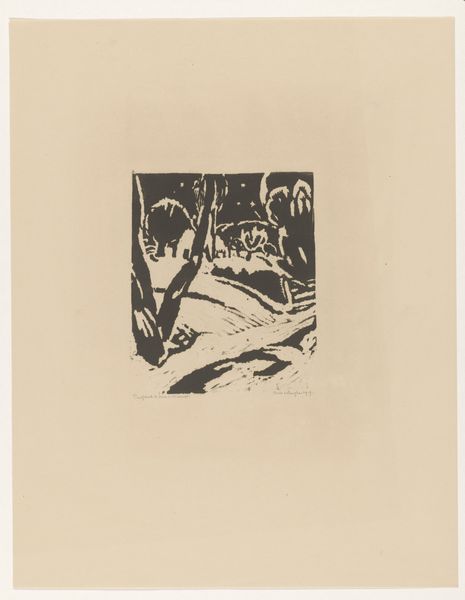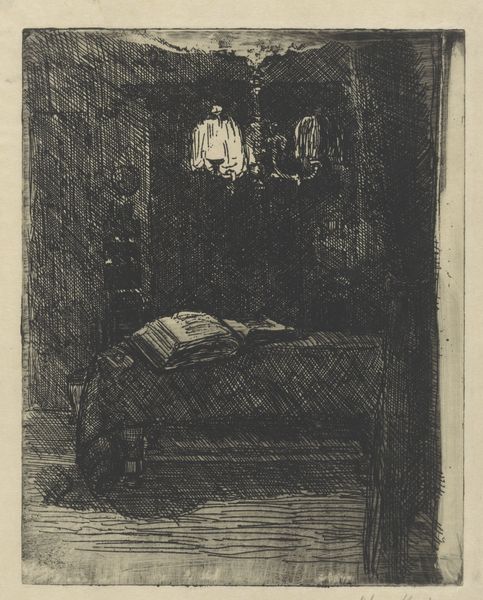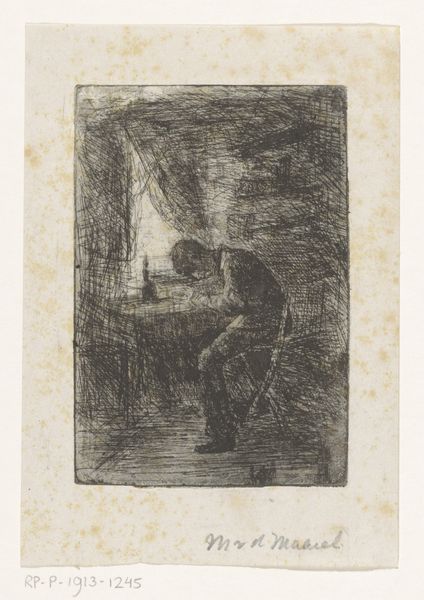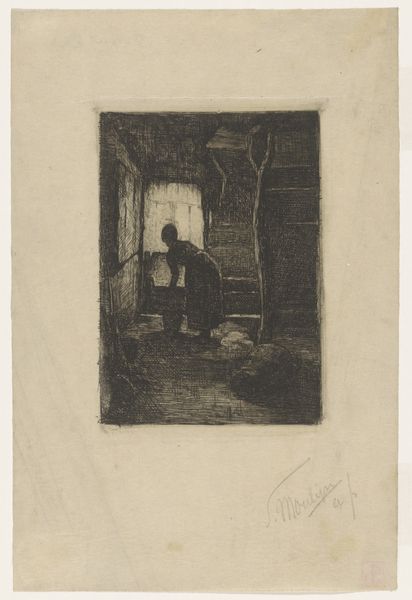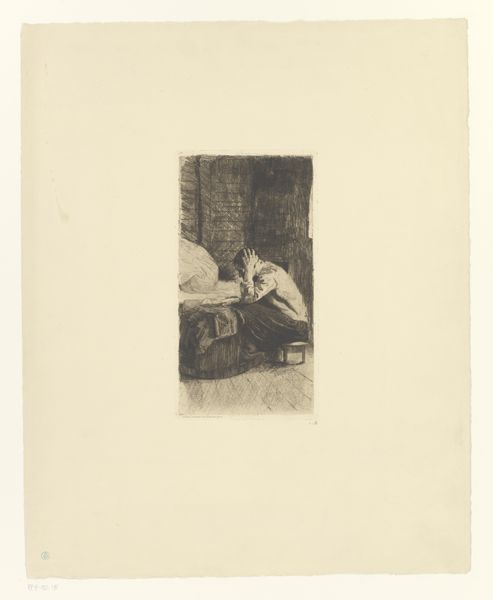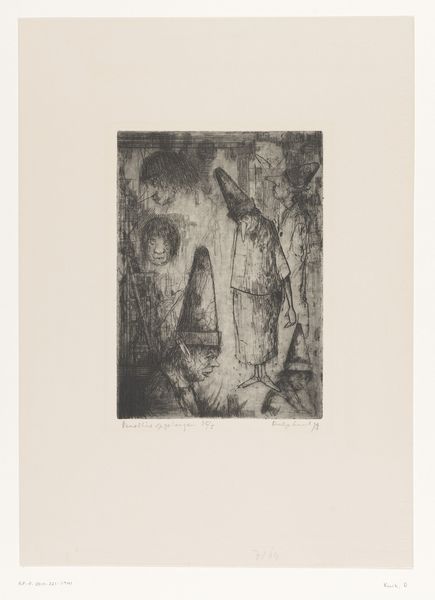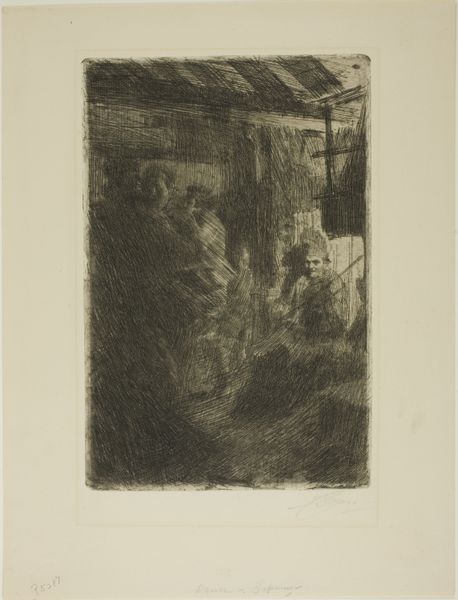
print, etching
# print
#
etching
#
realism
Dimensions: height 179 mm, width 109 mm
Copyright: Rijks Museum: Open Domain
Editor: This is "Still Life with Wine Bottle and Garlic" by Martinus van Regteren Altena, likely created sometime between 1876 and 1908. It’s an etching. It’s fascinating how such simple objects become imbued with so much texture through the printmaking process. It has a rather austere, almost solemn feel, doesn't it? How do you interpret this work within its historical context? Curator: The social standing of still life paintings, especially in the late 19th century, provides a compelling context here. It had previously been considered a 'lower' genre. What does its rise in popularity, particularly among avant-garde artists, say about changing artistic values and perhaps a move towards depicting everyday life, democratizing art? Editor: That’s an interesting point. So, the focus shifts from grand historical narratives to simpler, more accessible scenes. I didn’t really think of its artistic ‘status’ previously. Curator: Consider how printmaking itself served the democratization of art. Etchings could be reproduced and distributed more widely than paintings. How might that impact the art world? Was there a potential clash between art as a commodity versus as cultural expression? Editor: So the means of production influence not only who *sees* the art but its perceived *value*? It’s making me rethink how accessibility can change reception. Is there perhaps a critique implied through its rather ordinary, even domestic, portrayal of simple life objects? Curator: The inclusion of garlic in the still life, seemingly mundane, has symbolic potential. Does it signal social class? A culinary statement? How do these humble objects stand in relation to grand narratives conveyed at institutions? Perhaps art gains public function when divorced from higher socio-economic spheres? Editor: I suppose the very act of displaying a commonplace scene challenges pre-existing norms in artistic values and societal structure? Thank you for unveiling a richer tapestry of historical perspective within the print. Curator: The beauty lies in examining the relationship between objects and cultural shifts. Thinking of how a simple still life operates beyond itself.
Comments
No comments
Be the first to comment and join the conversation on the ultimate creative platform.
